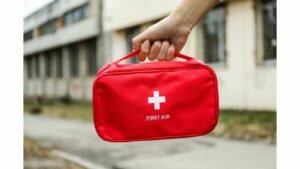Emergency services are a vital component of any community’s infrastructure, and at the heart of it is the iconic 911 system – a lifeline to help in the most dire of circumstances. This comprehensive guide is crafted for those who wish to learn more about the intricate web of support that is set into motion with a single phone call. We will shine a light on the historical development of this crucial service, the entities it connects, and the latest technological advancements that are revolutionizing emergency response. Whether you’re a public safety enthusiast or a casual community member, the knowledge within these pages will deepen your understanding and appreciation for emergency services and the essential work they do day in, day out.
The Role of 911 in Society
At its core, 911 is a three-digit telephone number designated as the “universal emergency number” for states and municipalities in the U.S. It is a direct line to the emergency services people need in situations that require immediate attention. The system handles millions of calls annually, ranging from true life-and-death emergencies to inquiries about local government services.
A Brief History of 911
The history of 911 is one of evolution and adaptation. In the 1960s, the President’s Commission on Law Enforcement and Administration of Justice recommended that a “single number should be established” nationwide for reporting emergency situations. Alabama made the first 911 call in 1968, and by 1987, half of the U.S. population was covered by the system. Since then, 911 has become a cornerstone of public safety, with countries around the world following this example.
Inside the 911 Call: How Emergency Responses Are Initiated
When you dial 911, your call begins a complex series of events that culminate in the arrival of emergency responders at your location. Understanding how this process works can demystify what happens behind the scenes and help you communicate more effectively in an emergency.
The Role of 911 Operators
The unsung heroes of the emergency response system, 911 operators are the first line of communication between the public and emergency services. They must stay calm under pressure, ask the right questions to ascertain the nature of the emergency, and quickly dispatch the appropriate response teams. This section will detail the skills and training necessary for this critical role.
Dispatch Process and Call Routing
An intricate web of technology and human expertise ensures that 911 calls are directed to the right call center, also known as a Public Safety Answering Point (PSAP). From there, another team of professionals sends help on its way. We’ll explore the call routing process and the steps taken to ensure your call is handled rapidly and accurately.
Mobilizing Emergency Services: The Three Pillars of 911
Emergency services are traditionally divided into three main branches: police, fire, and medical. Each plays a distinct yet interconnected role in keeping the public safe.
The Police Response
Law enforcement officers are often the first to arrive on the scene of an emergency. They are trained to manage chaotic situations, secure the area, and maintain public order.
Fire Department: Bravery and Preparedness
Firefighters are experts in life-saving rescue, fire suppression, and prevention. They respond to a variety of emergencies, from structure fires to vehicular accidents, often putting themselves in harm’s way to protect others.
Medical Services: The Healers
EMTs and paramedics provide vital medical care on-site and during transport to the hospital. Their rapid response can be the difference between life and death for the individuals they treat.
Specialized Units and Services
Beyond the traditional roles, there are specialized units within emergency services that are called upon for unique and challenging situations. These include tactical response teams, bomb squads, and hazardous materials units. We will explore the specialized training and equipment required for these elite responders.
Technological Breakthroughs
Technology has dramatically transformed the speed and efficiency of emergency response. We will examine how systems such as GPS and advanced medical telemetry are integrated into 911 responses to save precious seconds and improve outcomes.
Community Involvement: Everyone Can Be a First Responder
Emergencies can happen at any place and at any time, often when there is no professional help immediately on hand. Community members who are trained in first aid and CPR can make a significant difference in the lives of those they assist.
The Importance of CPR and First Aid Training
Basic first aid and CPR skills can stabilize a patient’s condition until professional help arrives. We will discuss the value of such knowledge and how it empowers individuals to be effective first responders.
The Role of Public Education
Awareness and preparedness are the best defenses against emergency situations. Engaging the public through educational programs and events fosters a community that is ready and able to respond to crises.
Conclusion: The Gratitude and Continual Evolution
Understanding how emergency services and the 911 system operate underscores the need for continual support and appreciation for the men and women who work in these critical roles. As technology evolves, and society’s challenges change, so too must emergency services adapt and improve. Recognizing the value of their work and the ever-present potential for emergency situations, the community at large can contribute to this evolution by staying informed and being prepared.
Emergency services are the unsung heroes of our society, ready to answer the call whenever we dial 911. Their stories are myriad, and their devotion to public safety is unwavering. It is our hope that this guide has deepened your understanding of their work and the systems they employ, leading to a more informed and appreciative perspective on the role of 911 in our lives. Whether you are considering a career in public safety, aiming to become a better-prepared citizen, or simply fascinated by the intricacies of emergency response systems, we salute your interest and commitment to enhancing the safety and well-being of your community.

